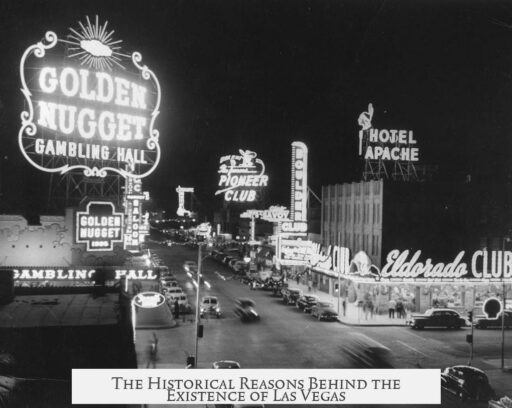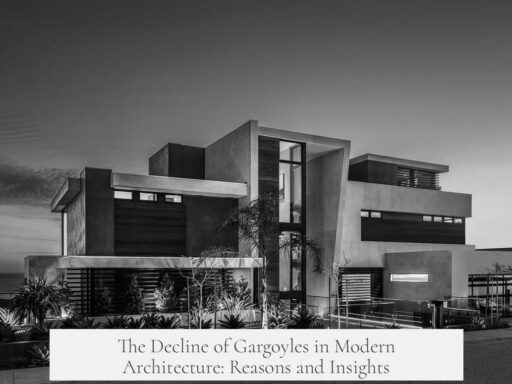Las Vegas exists because of its strategic location, natural water resources, transportation role, and unique economic developments. Initially, springs in the area made it a critical water stop in a dry region. Early settlers, including Mormons in the 1850s, were drawn by this water. The town was officially established in 1905 when the railroad filed a plat map, designating Las Vegas as a stop between Los Angeles and Salt Lake City. This railroad connection made it a vital transportation hub.
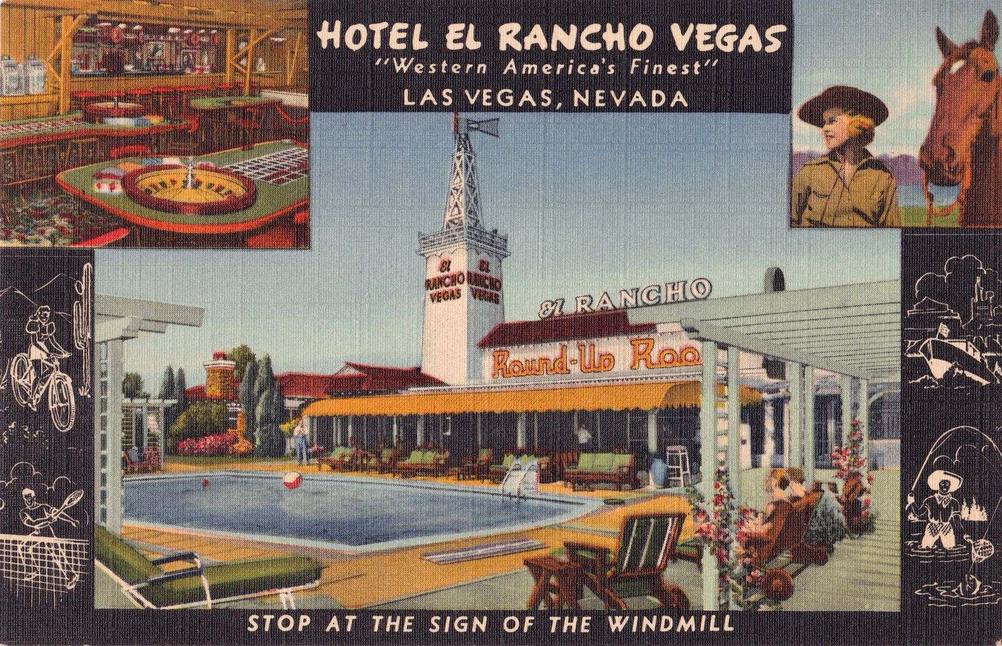
Las Vegas became more important when it was named the county seat of Clark County in 1909. Clark County had been formed from the southern half of Lincoln County, which was too large to govern effectively without a central population hub. This change solidified Las Vegas’s administrative role in the region.
The Great Depression brought significant changes. In 1931, Nevada legalized gambling and allowed quick divorces and marriages to attract tourists and boost the economy. While the north of the state benefited most, this legislation laid groundwork for Las Vegas’s future as a gambling destination.
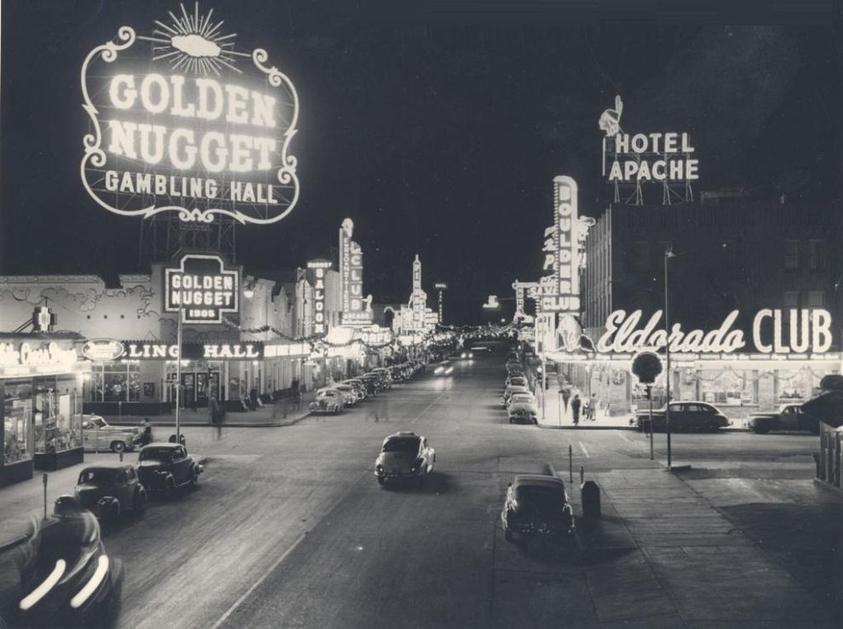
The construction of Hoover Dam in the early 1930s further boosted Las Vegas. Workers from the dam sought entertainment there, and the dam’s completion provided reliable water and affordable electricity. Additionally, the invention of cost-efficient air conditioning helped Las Vegas become a year-round destination.
Las Vegas’s proximity to Los Angeles also fueled growth, especially after World War II. Air-conditioned casinos and resorts attracted visitors from across the country. Importantly, the famous Las Vegas Strip is not inside the city limits but on neighboring county land. This allowed casino owners to escape higher city taxes and strict regulations, encouraging rapid development outside city control.
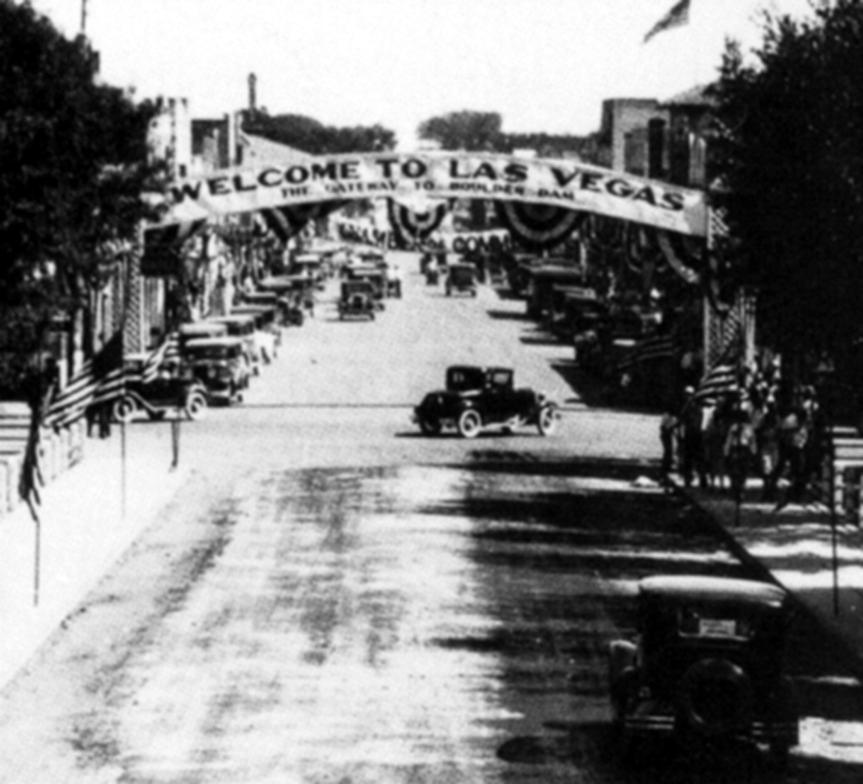
| Factor | Impact on Las Vegas |
|---|---|
| Natural Springs | Provided essential water in desert |
| Railroad Stop (1905) | Established town and transportation hub |
| County Seat (1909) | Regional governance center |
| Gambling Legalization (1931) | Started tourism growth |
| Hoover Dam (1930s) | Water, power, entertainment for workers |
| Post-WWII Growth | Tourism boom, casino development |
- Las Vegas began due to natural water sources essential for survival in a desert.
- The railroad established the town as a key transportation link.
- Legalized gambling in 1931 attracted tourists and created economic opportunity.
- Hoover Dam brought resources and visitors, fueling growth.
- The Strip developed outside city limits to avoid regulation.
Why Does Las Vegas Exist?
Las Vegas exists because it grew from a rare desert oasis into a vital transportation hub and then blossomed into the entertainment capital of the world by leveraging water, transportation, legal innovation, and the post-war boom. Sounds simple? Let’s unpack that with some juicy desert history, unexpected legal twists, and mid-century power plays.
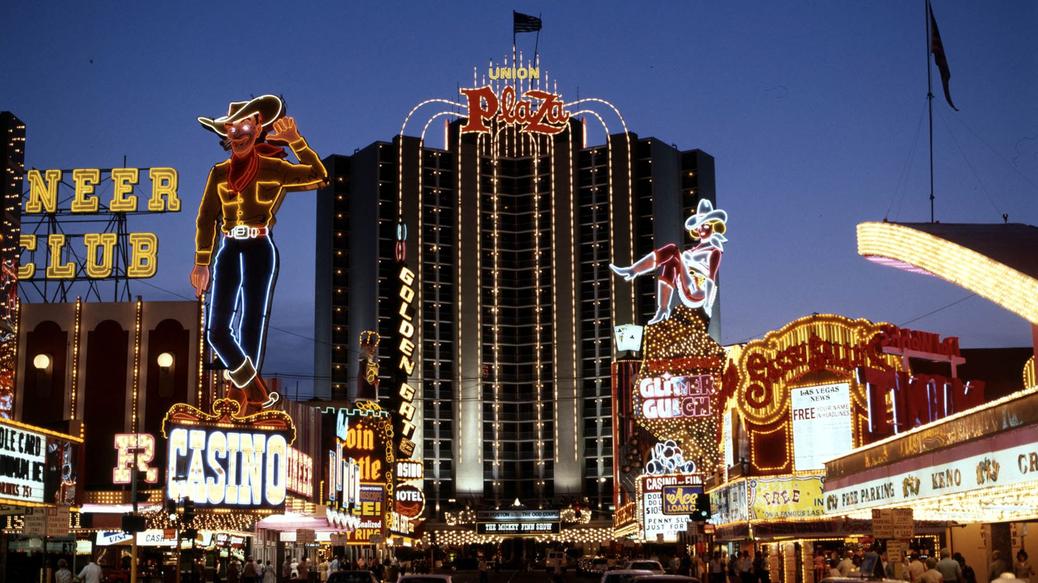
Picture this: the Nevada desert is as dry as a forgotten sponge. Yet smack in the middle of nowhere, there’s a surprise—a spring of fresh water. Long before all the neon lights and slot machines, this tiny water source carved out the reason for life: Las Vegas. It was a natural stop on the Spanish Trail, a pre-contact route where travelers and traders paused to refill under the scorching sun. The 1850s saw Mormons settle here, drawn by water in an otherwise hostile environment. Without this spring, the city would just be a mirage.
So, long before Sin City became synonymous with bling and blackjack, it served a much humbler but crucial purpose—quenching thirst and fueling the trail westward. Water in the desert: the first spark for a city destined to shine bright.
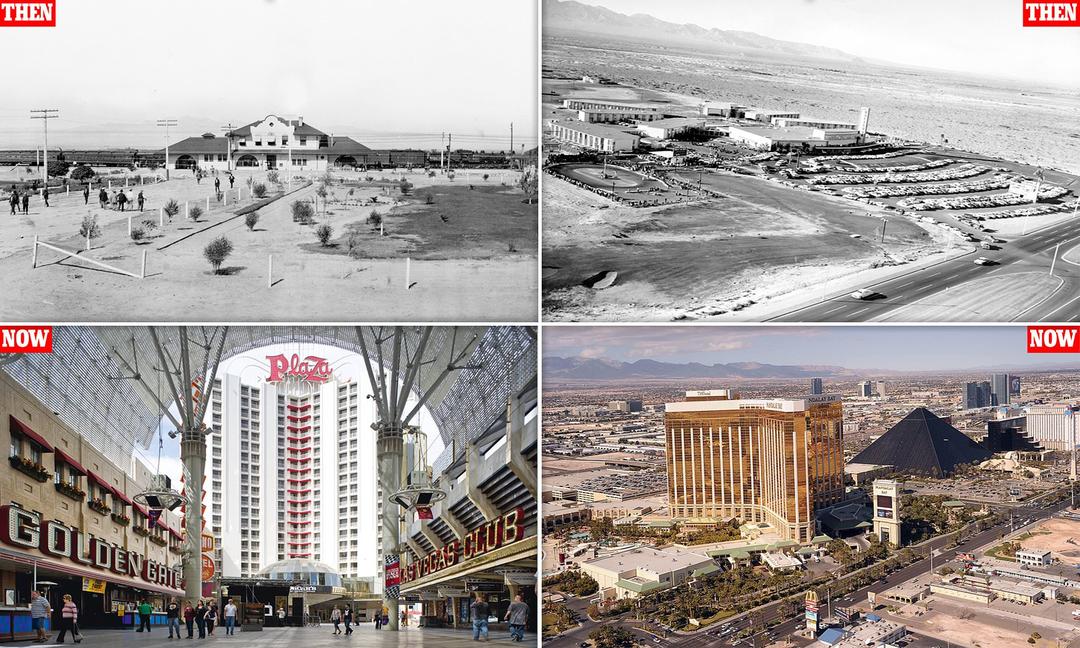
Fast forward to 1905. The railroad companies decide to map out a new stop between Los Angeles and Salt Lake City. Why here? Because Las Vegas had water and was perfectly placed as a midpoint. The Las Vegas plat map officially plotted the town, marking its birth on modern maps as a transport hub and connection to the transcontinental railroad. Transportation was the next lifeblood, ushering in more settlers, commerce, and the framework for growth.
This strategic positioning didn’t go unnoticed. In 1909, Las Vegas was named county seat of Clark County, which was carved out from the massive Lincoln County to better serve the growing population. Imagine trying to govern a county stretching across desert expanses! Creating Clark County and putting Las Vegas at its heart recognized the city’s rising importance.
Then came the Great Depression—the 1930s hit hard, and Nevada needed a plan to survive. Enter two surprising lifelines: legalized gambling and quick marriages and divorces. This savvy legislative move made Nevada, and eventually Las Vegas, stand out. While gambling initially caught on more in northern Nevada, these laws laid the foundation for Las Vegas’s massive future tourism industry. It was the first time “going all in” didn’t mean just in card games but in legislation to save the economy.
But what really pumped electricity and life into Las Vegas? The Hoover Dam. Built in the early 1930s, the dam was a massive engineering marvel perched on the Colorado River. It supplied cheap electricity and a stable water supply, transforming Las Vegas from a dusty railroad stop into a glowing, modern city. Workers building the dam flocked to Vegas for entertainment, sparking an early nightlife buzz.
Post-World War II brought new technology too: air conditioning, which sounds mundane now but was revolutionary in desert heat. Suddenly, stepping into a casino was like entering an oasis not just of water, but cool air. Add that to Las Vegas’s proximity to booming Los Angeles, and you had the perfect recipe for tourism. The city became a playground for Americans eager to gamble, dance, and forget their worries under cool neon lights.
Let’s talk geography. The famous Las Vegas Strip with its mega-casinos and endless bright lights isn’t actually inside the city limits. It sits just south, on county land, allowing casinos to dodge city regulations and fees. Clever real estate jockeying maximized profits and growth, turning the Strip into an entertainment corridor that draws millions every year.
So why does Vegas exist? Water started it. Railroads solidified it. Governance shaped it. Law adapted it. Infrastructure fueled it. And innovation propelled it forward. Without water, the Spanish Trail wouldn’t have created a stop here. Without the railroad, Las Vegas might remain a dot on the desert map. Without legal gambling amid economic crisis, there’d be no casino city. Without Hoover Dam, no cheap energy. Without air conditioning and access to Los Angeles, no tourist paradise.
Las Vegas is more than glitz and glamour. It’s a masterclass in adapting to environment, seizing economic opportunity, and exploiting geography and technology. It shows how a tiny water spring blossomed into the epicenter of entertainment and risk-taking in America.
Does this make you rethink Vegas? It’s not just about fast money and flashing lights—it’s a story of survival, vision, and bold moves in a tough desert land. Would Las Vegas be here today without that spring, the railroad, or the dam? Probably not.
If you visit, see beyond the bright lights. Imagine the early travelers relying on that spring and those early settlers wrestling with wild ambitions under a vast desert sky. Las Vegas exists because people needed water, passage, jobs, governance, and—yes—fun, especially when times got tough.
Next time you place a bet or stroll the Strip, remember: Vegas is a desert phoenix that rose thanks to the improbable coming together of nature and human grit. Now, who’s feeling lucky?
